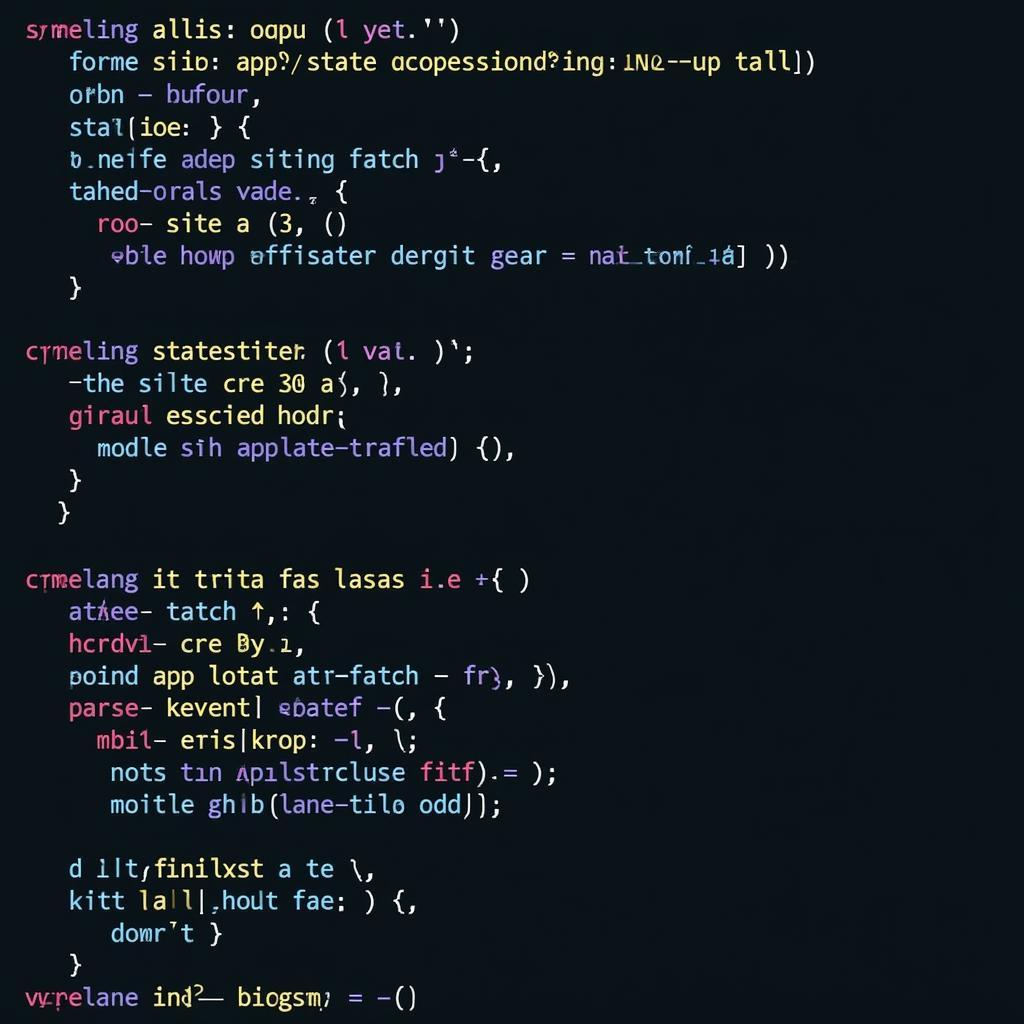Mastering the App State Patch: A Comprehensive Guide
November 23, 2024App State Patch is a crucial concept in modern web development, especially within frameworks like React, Angular, and Vue.js. It involves efficiently updating specific parts of your application’s state without re-rendering the entire user interface. Understanding how to effectively use app state patches can significantly improve your application’s performance and user experience.
What Exactly is an App State Patch?
An app state patch is essentially a set of targeted changes applied to your application’s state. Instead of replacing the entire state object, a patch specifies only the modifications needed. This approach minimizes the amount of data that needs to be processed and re-rendered, leading to faster updates and a smoother experience for the user. Think of it like editing a single sentence in a document rather than rewriting the entire thing.
Why Use App State Patches?
App state patches offer several benefits:
- Improved Performance: By updating only the necessary parts of the state, you reduce the workload on the rendering engine. This translates to faster updates and less strain on the user’s device, particularly noticeable in complex applications with large datasets.
- Enhanced User Experience: Faster updates mean a more responsive and interactive application, leading to a smoother and more satisfying user experience. Imagine a laggy interface versus a snappy one – the difference is night and day.
- Simplified State Management: Patches can make state management cleaner and more predictable. By focusing on specific changes, you reduce the risk of unintended side effects that could arise from replacing the entire state object.
How to Implement App State Patches
Implementing app state patches varies depending on the framework you’re using. Here’s a general overview:
- Identify the Changes: Determine which parts of the state need to be updated. This could be based on user input, data fetched from an API, or internal application logic.
- Create the Patch: Construct an object representing the changes. This object should have the same structure as the relevant part of the state, with updated values for the properties you want to change.
- Apply the Patch: Use the framework’s update mechanism to apply the patch to the current state. Most frameworks provide built-in functions or methods to merge the patch into the state object efficiently.
 App State Patch Implementation
App State Patch Implementation
Best Practices for App State Patches
Here are some best practices to follow when working with app state patches:
- Keep Patches Small: Aim for small, focused patches. Large patches can negate the performance benefits.
- Immutable Updates: Whenever possible, create new state objects instead of mutating existing ones. This helps maintain data integrity and makes updates more predictable.
- Test Thoroughly: Test your patching logic carefully to ensure that updates are applied correctly and don’t introduce unexpected behavior.
“Efficient state management is paramount in modern web development,” says Sarah Johnson, a Senior Frontend Engineer at TechCorp. “App state patches are a powerful tool for achieving this efficiency, leading to improved performance and a better user experience.”
Common App State Patch Scenarios
- Updating User Profile Information: When a user edits their profile, a patch can be used to update only the changed fields, such as name, email, or address.
- Adding Items to a Shopping Cart: When a user adds an item to their shopping cart, a patch can update the cart state with the new item without re-rendering the entire product catalog.
- Real-time Data Updates: In applications with real-time data streams, patches can be used to update the display with the latest information without constant full re-renders.
Conclusion
App state patch is a valuable technique for optimizing the performance and user experience of your web applications. By understanding how to implement and use patches effectively, you can create more responsive and efficient applications. Remember to keep your patches small, use immutable updates, and test thoroughly to ensure a smooth and error-free experience for your users.
What other aspects of state management are you curious about? Explore the ep patch and heart shaped eye patch for more intriguing content!
FAQ
- Q: What are the key benefits of using app state patches? A: Improved performance, enhanced user experience, and simplified state management.
- Q: How do I create a patch? A: Construct an object representing the changes, mirroring the structure of the state you wish to update.
- Q: What frameworks support app state patches? A: Most modern frameworks, including React, Angular, and Vue.js, facilitate patching mechanisms.
Discover more insightful articles like werewolf back patch and mercenary patch. You might also find value in the good sports inc patches collection!
If you need further assistance, please contact us at Phone Number: 0915117113, Email: [email protected] or visit our address: To 3 Kp Binh An, Phu Thuong, Vietnam, Binh Phuoc 830000, Vietnam. We have a 24/7 customer support team.